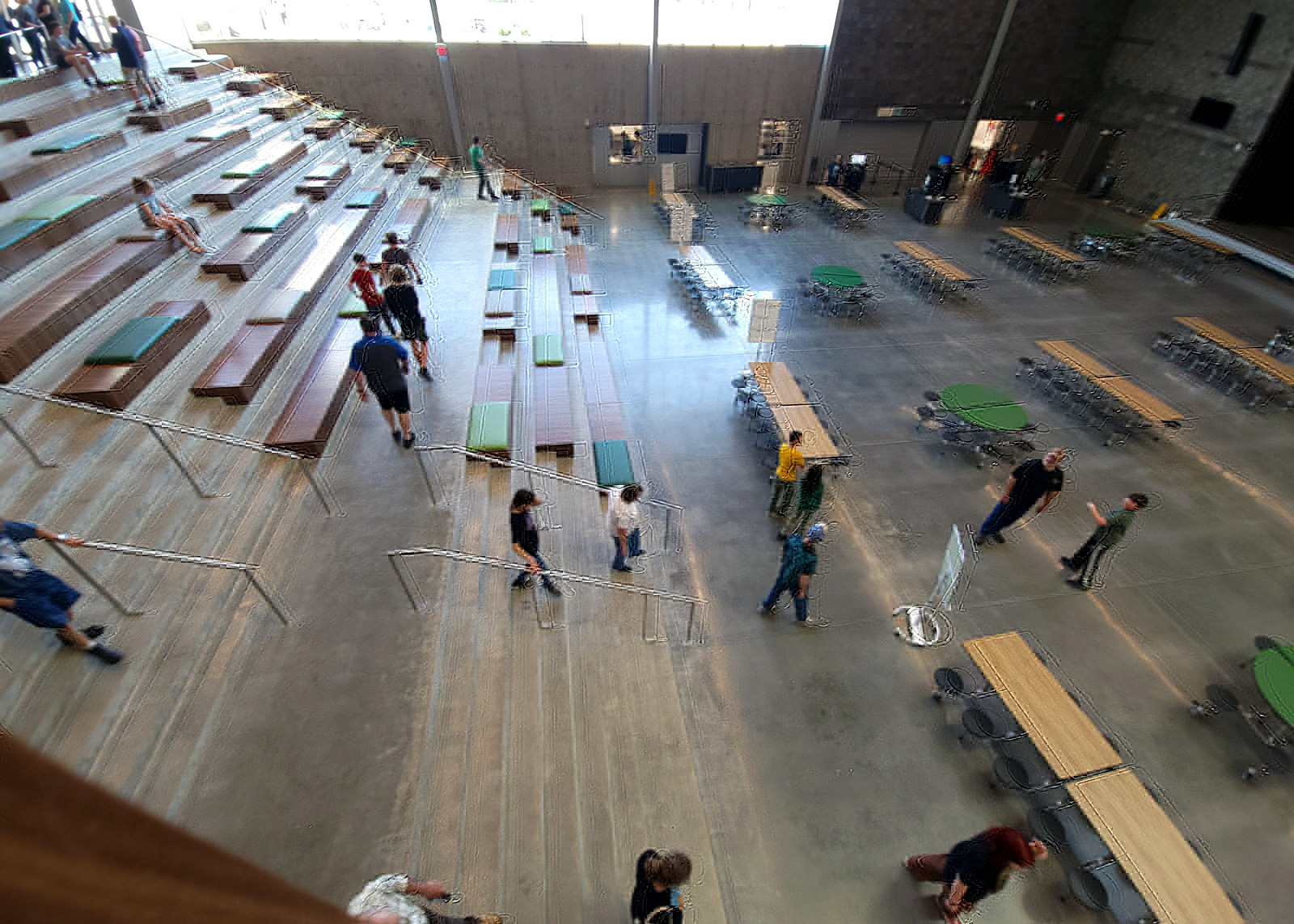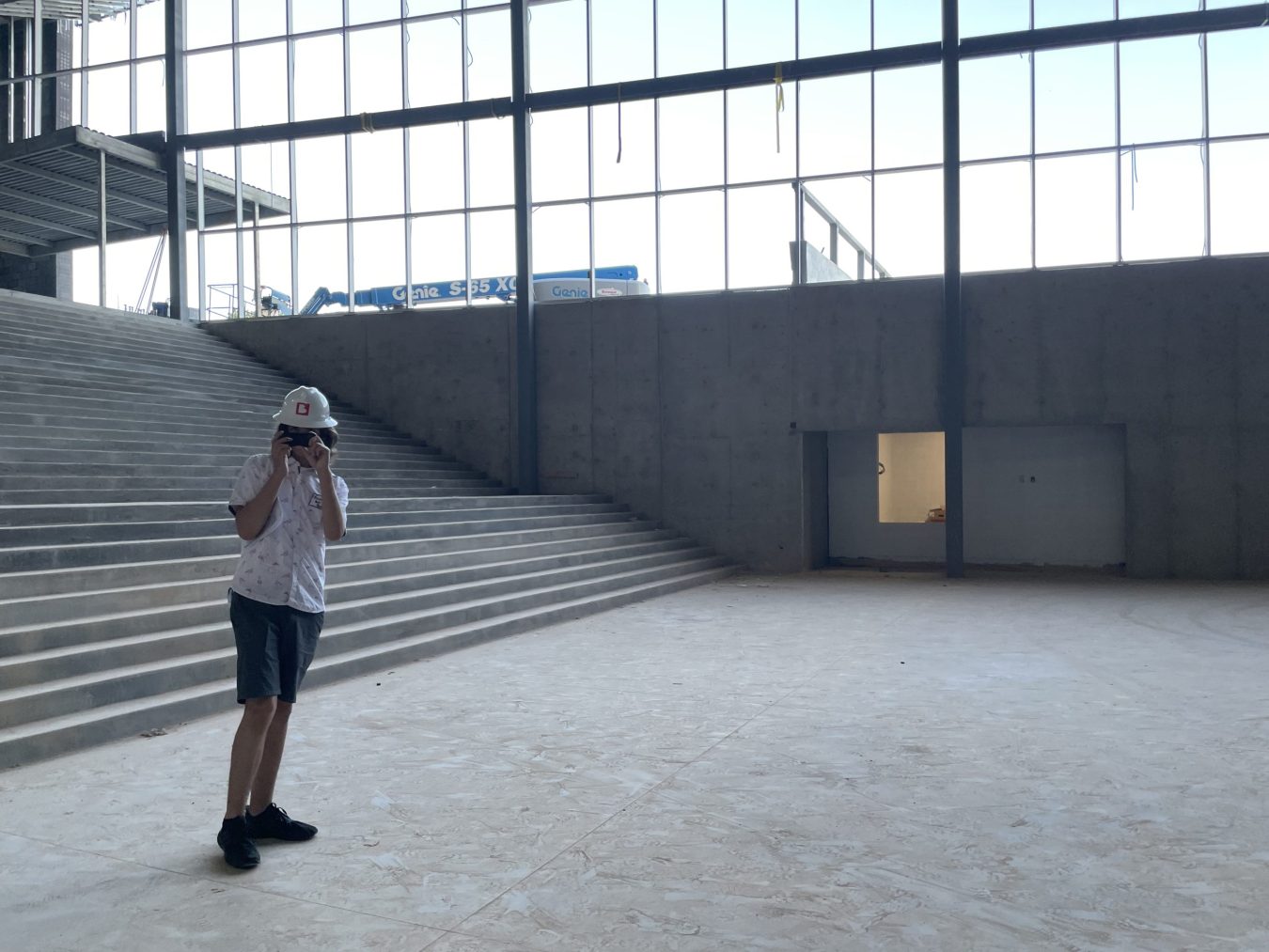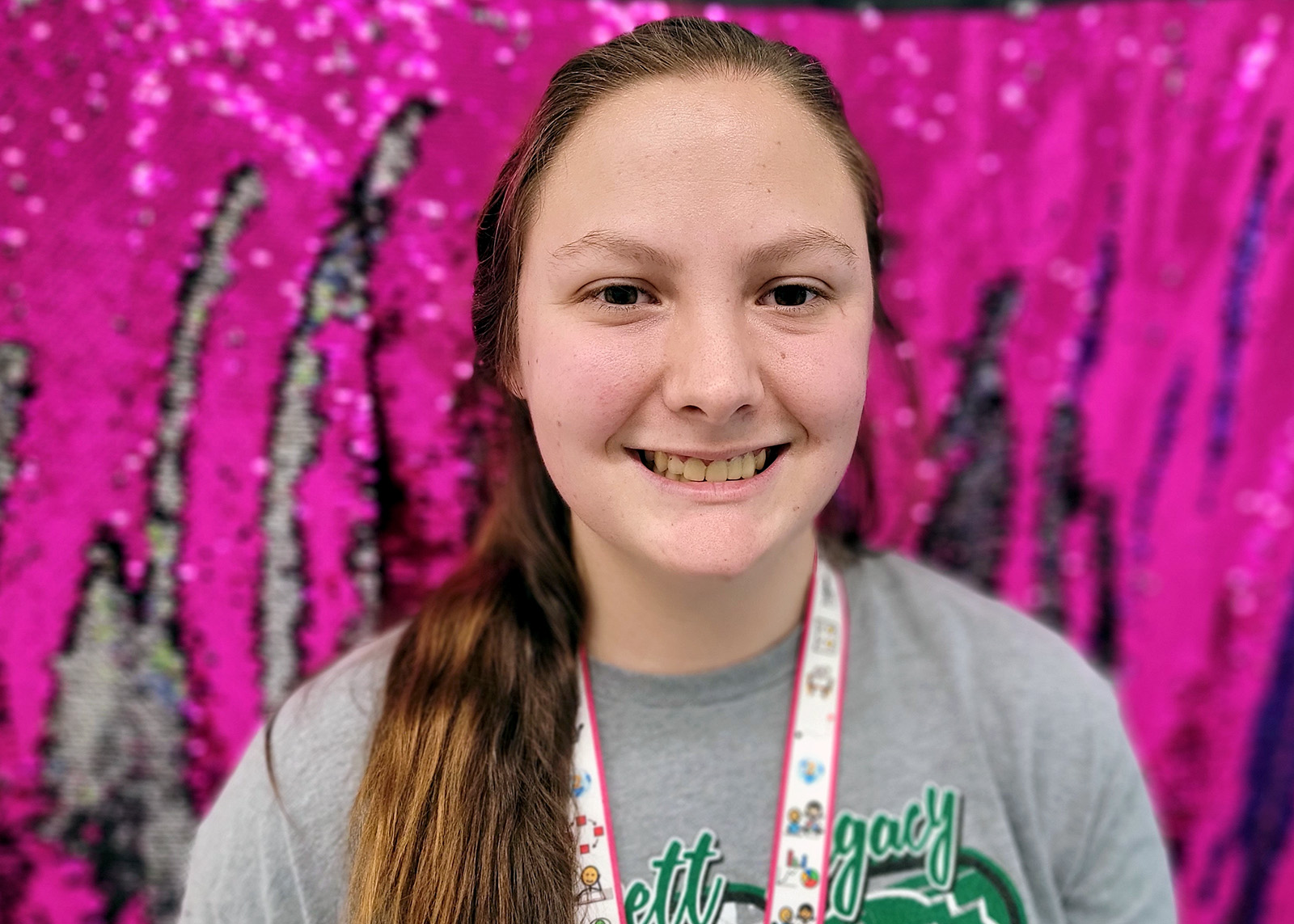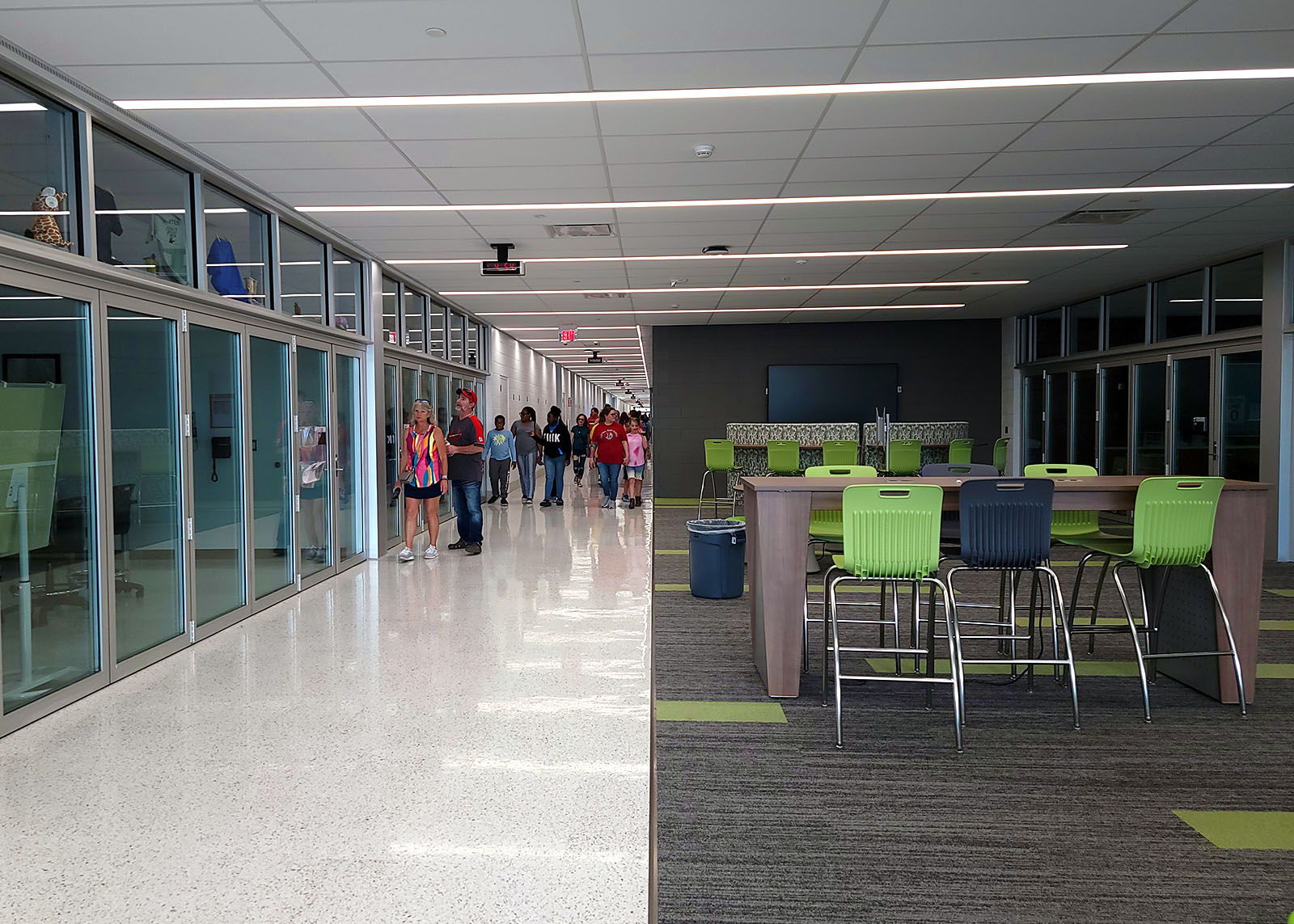In his remarks before helping Jarrett Middle School students and staff cut the ribbon on the 130,000-plus square foot school on West Portland Street, principal Kirk Slater noted that the old Jarrett had recently turned 100.
“What a birthday present,” Slater said. “It is an awesome, awesome facility.”
Collaborative learning spaces, classrooms designed for students to master STEAM skills and enough natural light beaming into the building to take the edge off a Saturday spent in his office were among many qualities Slater pointed to in his speech.
Last month, students and staff moved into the $41 million building, the largest project tied to the 2019 Proposition S school bond ballot measure. The first day of classes at the new Jarrett started on March 20. The community was invited in on Monday, a day before the latest Proposition S vote.
Denise Fredrick, SPS board president, said in her opening remarks that the building is already “transforming the learning experience for Jarrett students and staff.”
Slater began his remarks by thanking the Springfield community, saying, “they were made aware of the need, and they believed it worthy enough to be addressed.
“I'm so thankful for you.”

‘It’s a lot brighter here, and I like that a lot’
Slater said students and staff can feel the difference being on a far more expansive campus. The new school sits on about a 9.5-acre parcel and offers nearly 50,000 more square feet of building space. After the ribbon was cut and the doors opened Monday afternoon, dozens of people poured through an entryway and found themselves face to face with two of the school’s massive new features. To their left was the set of “learning stairs” that led down to a stage space and Jarrett’s cafeteria, which Slater described as a sanctuary. To their right was the new full-size gym, which doubles as a storm shelter.


“We definitely wanted to build and design a building that would meet the needs of middle school kids who thrive on the natural light, who thrive on the visibility and the flexibility of space,” said Travis Shaw, executive director of operations at SPS. “They're getting into that age of taking on that responsibility of a little bit of freedom of movement and things like that. Building and structuring these learning spaces in that manner allows those things to take place, and it gives not only kids flexibility, but it gives teachers flexibility around the instruction.”

Ellen Scanlan, a special education cross-category teacher, described the gym as “massive” and said the space has allowed for students with special needs to integrate with regular ed students. Upstairs in her classroom, Scanlan marveled at a feature her room in the old building lacked, a window.
“It’s a lot brighter here, and I like that a lot,” she said, and her students do, too.
“I can tell that they respect this building a lot more, and it makes them feel a sense of ownership to take care of the building,” she said. “So I can already see their mindsets shift in that area.”
Along with the gym, the big windows and the multipurpose room, Scanlan pointed to a smaller space that she said is already making a major impact, the sensory room.

Tucked down a side hallway on the second floor, the room offers a number of items, from a set of sequined wall hangings to a mini trampoline, that Tessa Bogowith, the school’s autism teacher, said go a long way toward helping students refocus. It’s a space that didn’t exist in the old building. “We made do with what we had,” she said.
She added: “But honestly, the kids that needed to be taken out of the room to help regulate, we couldn't do that. We did not have a space at all. So it caused a lot of more overstimulation with our kids. This, it's so nice, because I can be like, ‘Hey, take them in here for like 10 minutes, and they come back and they're fully regulated, ready to work.' It's been a lifesaver.”

New building’s open design raises concerns among some students about safety; district officials will address them
Many of Jarrett’s classrooms have full-length glass walls, which provide total visibility into and out of teaching environments. The design is in stark contrast to the old school, where cinderblock walls formed the outside of classrooms. Shaw in September told KY3 that was designed in response to the growing body of research showing that young students learn differently, and one-size-fits-all models to education don’t offer flexible learning environments for teachers and students. But the change has caused some students to express concerns about safety.
The ribbon-cutting occurred several days after Kate Ward, a seventh-grade Jarrett student, started a Change.org petition titled, “Make Jarrett safe.” Ward emailed the Hauxeda about the petition, which was signed by 117 people as of noon Monday. It reads in part: “The students and faculty at the brand new Jarrett building are not safe from an active shooter, due to the all glass walls in every classroom that are not bullet proof.”
Over the weekend, when there were 66 petition signers, Ward said in an email to the Daily Citizen that 52 of the signatures came from other Jarrett students. She said the non-bulletproof classroom walls “are what make us feel unsafe” and that “I would want frosted and safety glass on all windows and glass walls or just a regular wall” to feel safe. She emailed Monday night to add she intended to take part in a national school walkout event planned for Wednesday by Students Demand Action, a group seeking to end gun violence in school buildings. “Don’t know who’s joining me,” she wrote.
The district and Jarrett administrators were unaware of the online petition until the Daily Citizen asked about it, SPS spokesman Stephen Hall said. Hall and Shaw said the district is committed to listening to concerns as well as providing an explanation of the intentional thought that went into developing the design of the school, including its safety measures.
Shaw said the district has worked with the Springfield Police Department to focus on “keeping the bad out” of schools in the first place with secured entries..
“Our priority around the safety of a school starts on the outside, which is why you see the double-secure entrance vestibules that we have, and the visitor management system — that we require all visitors to come through to be screened before they are allowed into the building,” Shaw said. He added that the bond measure on the April 4 ballot includes safety investments that would fund protective ballistic film for all SPS first-floor exterior windows and door sensors if voters approve it.
Inside and outside Jarrett, there are security cameras monitoring the school, Shaw said. A school resource officer patrols the building as well. At each of the Springfield district’s schools, an ALICE — alert, lockdown, inform, counter, evacuate — safety plan is in place that instructs students and staff in part on how to respond to intruders. The new Jarrett Middle school is no exception, Hall said. The district doesn’t publicize those event-specific plans, Hall said, because they don’t want the information to be used by bad actors. Jarrett students have not yet gone through an active shooter drill at the new school, Hall said. It had been scheduled to take place at about the time that the school shooting took place at Covenant School in Nashville, Hall said. Running a drill in proximity to the March 27 shooting was considered to be a potentially traumatizing event for middle school students, Hall said.
David Hall, director of safety at Missouri State University and a co-chair of the task force that has helped shape the 2019 and 2023 bond projects, said he has worked on safety plans at MSU for open, flexible learning environments similar to Jarrett. The open environment means you have to have plans in place to respond to an intruder, but at the college level the design also eliminates hidden areas where crimes can occur, Hall said.
“Whenever you look at it for other threats, the open design actually increases the safety of (the building),” Hall said. “Everything is a tradeoff.”
Recent National Center for Education Statistics data shows that, at the K-12 level, bullying incidents are far more likely to occur in secluded corners of a school than in an area where eyes are on the would-be perpetrator. Shaw said the Jarrett design offers beneficial added sightlines in that regard.
“There are multiple layers of safety and security, and so what I think this does, it provides us an opportunity to, to double down and do a better job of explaining all of these things,” Hall said. “And so as we're implementing our training, as we're implementing our drills, we will utilize this opportunity to make sure that our students and our staff fully understand that safety and security were at the heart of every aspect of the building's design and construction and that they should feel safe and secure. And I think the longer that we're in the building, the more time that we have to acclimate.”

